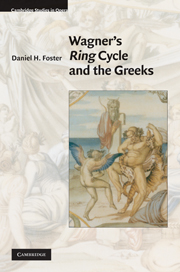Epilogue: Time, the Ring, and Performance Studies
Published online by Cambridge University Press: 07 May 2010
Summary
It is difficult to find a theoretical language inclusive enough to embrace all aspects of opera, partly because the methods prescribed by a critic's chosen discipline – music, drama, literature, etc. – by definition tend to neglect one or more aspects of opera's inherently multimedial form. To take only one example of how one's disciplinary approach can lead to incomplete and biased readings, look at the ways in which opera's different media order time. The approximate real time of dramatic recitatives contradicts the apparent timelessness of lyric arias, while the linear movement of dramatic plot opposes the circular movement of ABA musical forms and harmonies. Given that so much contradiction and conflict arises from and is determined by the different kinds of disciplinary approaches one takes, the problem becomes finding a language that can analyze opera as inclusively as possible. In Wagner these chronological contradictions become even more important, interesting, and far-reaching. Bracketing the Ring within a four-day performance time, Wagner aligns himself with the tragic festivals of ancient Greece while prefiguring theatrical happenings in America during the 1950s and 1960s, as well as certain absurdist theatrical experiments that involve racing against the clock.
While the main body of this book has dealt with the ways in which the Ring cycle looks to the past and is influenced by that past, briefly, in the space of this Epilogue, I would like to pick up on something mentioned at the close of the last chapter: the ways in which the Ring cycle looks to the future, both in terms of some of its far-reaching aesthetic features and the theories one might use to describe these features.
- Type
- Chapter
- Information
- Wagner's Ring Cycle and the Greeks , pp. 253 - 266Publisher: Cambridge University PressPrint publication year: 2010

